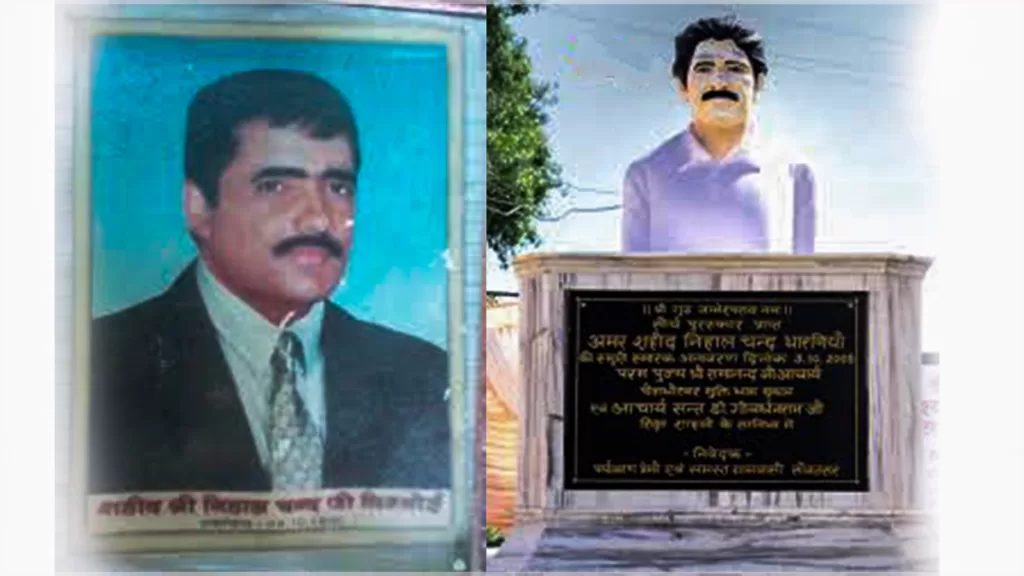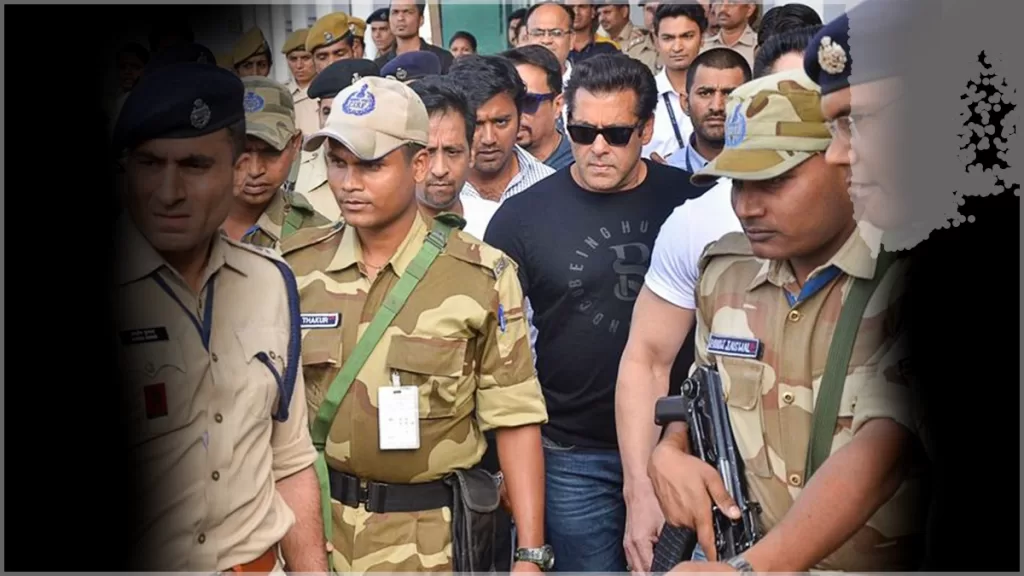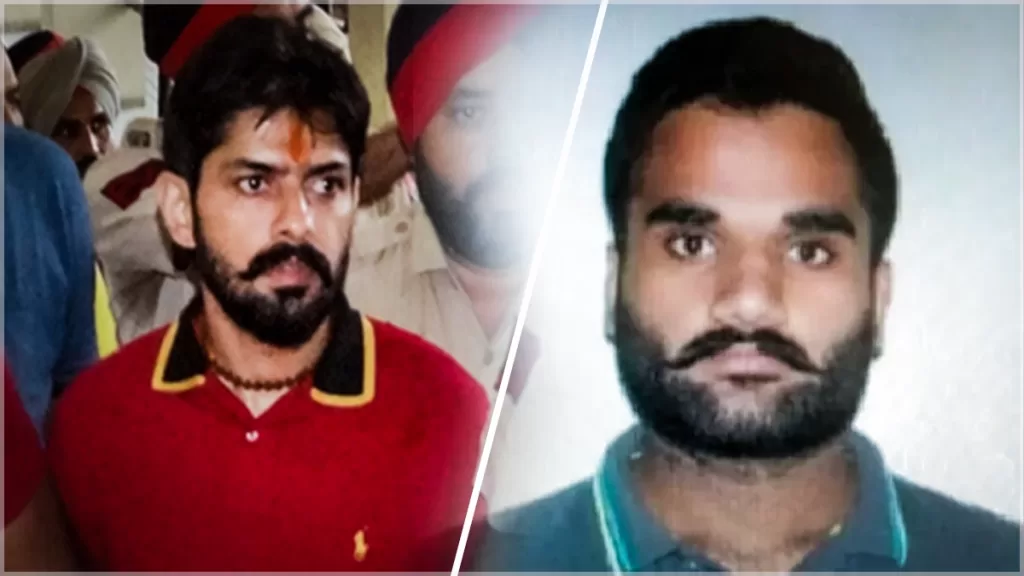The Bishnoi community has long been known for its unwavering dedication to nature and wildlife conservation. A particular event from 1996 showcases the extent of this commitment. Nihal Chand Bishnoi, a resident of Bikaner, became a symbol of bravery when he risked and lost his life trying to protect six deer that had been hunted in Badu village. His sacrifice and the Bishnoi community’s strong connection to wildlife highlight the deep-rooted beliefs that guide their actions, a mindset still prominent in modern times, as seen in the controversy involving Lawrence Bishnoi.
Table of Contents
A History of Sacrifice: Nihal Chand Bishnoi’s Heroism

On October 3, 1996, Nihal Chand Bishnoi, a passionate protector of wildlife, received distressing news that six deer had been killed by poachers in Badu village. Immediately, Nihal Chand, along with fellow villagers, rushed to the scene to confront the hunters. Determined to stop the poachers, the group engaged them in a heated conflict. Unfortunately, the poachers, in their attempt to flee, opened fire, severely injuring Nihal Chand. Despite being gravely wounded, Nihal Chand refused to leave the area, ensuring the poachers could not escape with their prey. Tragically, he succumbed to his injuries at the site. In recognition of his incredible bravery, the Indian government posthumously awarded Nihal Chand the Shaurya Chakra in 1999, making him the first civilian to receive the honor for defending wildlife.
This tale of sacrifice and devotion to wildlife continues to resonate deeply within the Bishnoi community. Their commitment is not limited to deer alone. Bishnois protect trees and all forms of life, even going to the extent of giving their lives to safeguard nature. The famous 1730 incident involving Amrita Devi Bishnoi is another example, where she and 363 others sacrificed their lives to protect the sacred Khejri trees.
Bishnois’ Strong Connection to Wildlife
The Bishnoi community’s anger towards the killing of blackbucks (a type of antelope) by Salman Khan during a film shoot in Jodhpur in 1998 can be better understood within this context. For the Bishnoi people, wildlife is sacred, and the killing of blackbucks was viewed as a heinous crime. Their bond with nature runs so deep that women of the community are known to nurse orphaned animals. This strong cultural connection to wildlife preservation has led to decades of legal battles in the pursuit of justice for the slain blackbucks, and their frustration with the lack of swift justice is palpable.

In 2006, a trial court sentenced Salman Khan to five years in prison for the killing of the blackbucks. However, Salman was released on bail shortly after, and in 2017, the Rajasthan High Court acquitted him in the case. Despite multiple legal proceedings, the Bishnoi community remains disheartened, with the blackbuck case dragging on for over 27 years, and they are still awaiting final justice.
Lawrence Bishnoi’s Vow for Revenge
This sense of injustice is what fuels Lawrence Bishnoi’s vendetta against Salman Khan. Lawrence, a notorious gangster from Punjab, has openly expressed his desire to kill Salman Khan for the blackbuck incident, symbolizing the deep resentment felt by many within the Bishnoi community. In interviews, Lawrence Bishnoi has stated that his long-standing anger towards Salman Khan stems from his childhood, when he learned about the blackbuck poaching case.
The Bishnoi community’s values resonate with Lawrence Bishnoi’s personal views, and he has vowed to avenge the blackbucks’ death, declaring that Salman Khan will not be forgiven unless he apologizes publicly. While some view Lawrence Bishnoi’s actions as criminal, others within the Bishnoi community see him as a guardian of their cause, someone who stands up for the protection of animals, aligning with their centuries-old tradition of nature preservation.
Who is Lawrence Bishnoi? From a Young Sportsman to a Gangster
Lawrence Bishnoi was born on February 12, 1993, in Punjab. His parents named him Lawrence because of his fair complexion, but the name “Bishnoi” indicates his connection to the Bishnoi community, known for their strong ties to environmental conservation. Interestingly, Lawrence initially had dreams of becoming a government officer. He was actively involved in sports and even competed in wrestling during his school days.

After completing his studies in Abohar, Lawrence moved to Chandigarh for further education at DAV College, where he became involved in student politics. It was during this time that he formed a close friendship with Goldy Brar, who would later become his partner in crime. Initially, Lawrence aimed to lead a normal life, but after losing his first college election, he bought a revolver and entered the world of crime. From there, he formed a gang with Sampat Nehra, a police inspector’s son, and expanded their criminal network across Punjab, Haryana, and even Delhi.
Despite being arrested in 2014, Lawrence Bishnoi’s gang activities have continued from behind bars. His influence stretches far and wide, with his network of 700 shooters operating in India and abroad. His gang is responsible for high-profile crimes, including the murder of singer Sidhu Moosewala in 2022 and political figure Baba Siddique in 2024. Even while in jail, Lawrence continues to be a looming threat, using social media to send messages and make threats, including those against Salman Khan.
The Intersection of Crime and Conservation
Lawrence Bishnoi’s rise as a gangster is a stark contrast to the Bishnoi community’s peaceful devotion to nature. While the Bishnois have historically used non-violent means to protest and protect wildlife, Lawrence has taken a more violent path, seeking retribution through crime. His actions are seen as a distorted reflection of the Bishnoi values of protecting life at all costs. The Bishnoi community’s fight for justice for the blackbucks may be righteous, but Lawrence Bishnoi’s methods are clearly rooted in the criminal underworld.
Conclusion
The Bishnoi community’s deep-rooted beliefs in the protection of wildlife and nature continue to play a significant role in contemporary issues, especially in relation to the blackbuck poaching case involving Salman Khan. Lawrence Bishnoi, with his gang activities, has brought further attention to this long-standing dispute, but his methods differ starkly from the peaceful protest traditions of the Bishnois.
While Lawrence Bishnoi’s gangster persona makes him a controversial figure, his motivations are intertwined with the Bishnoi community’s commitment to wildlife conservation. This juxtaposition of crime and conservation continues to unfold, keeping the blackbuck poaching case in the limelight, even 27 years after it first began. As the Bishnoi community waits for justice, the world watches closely to see how this story, marked by both sacrifice and violence, will ultimately conclude.


